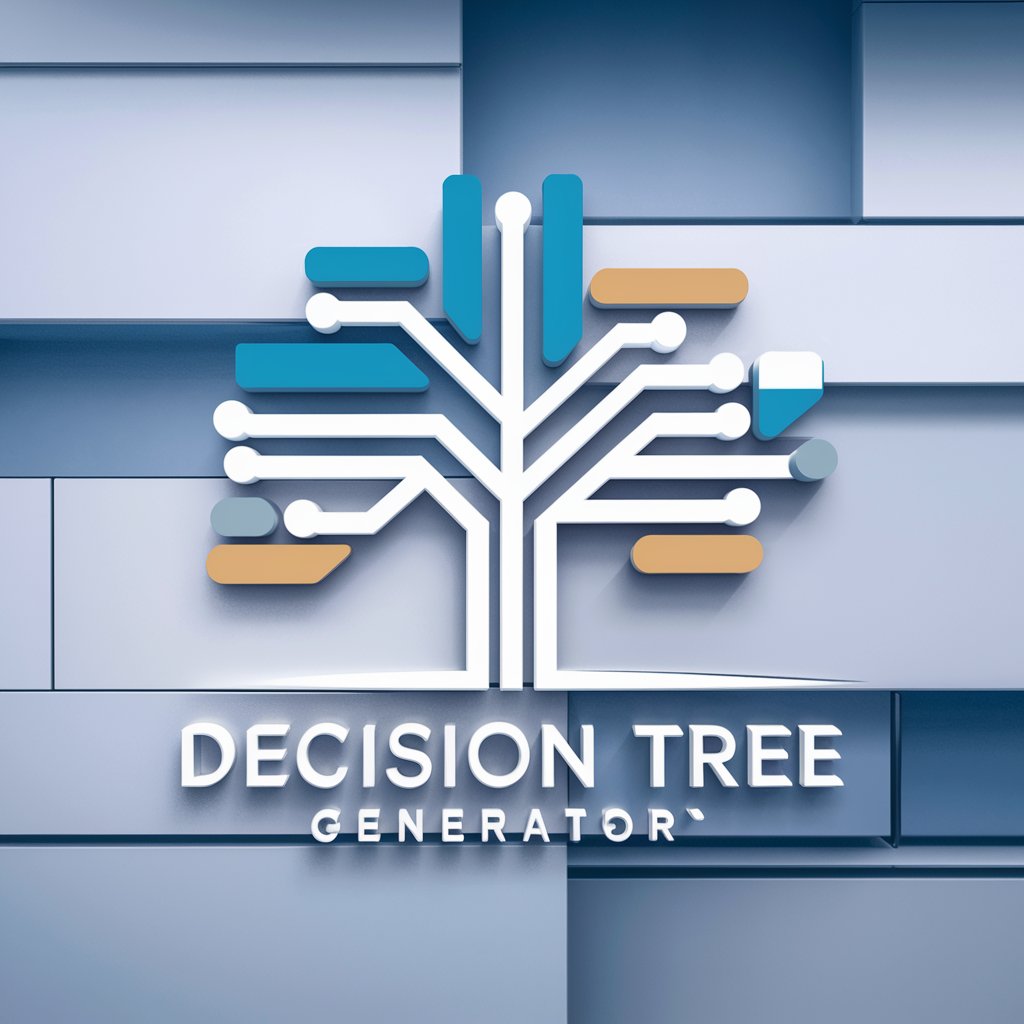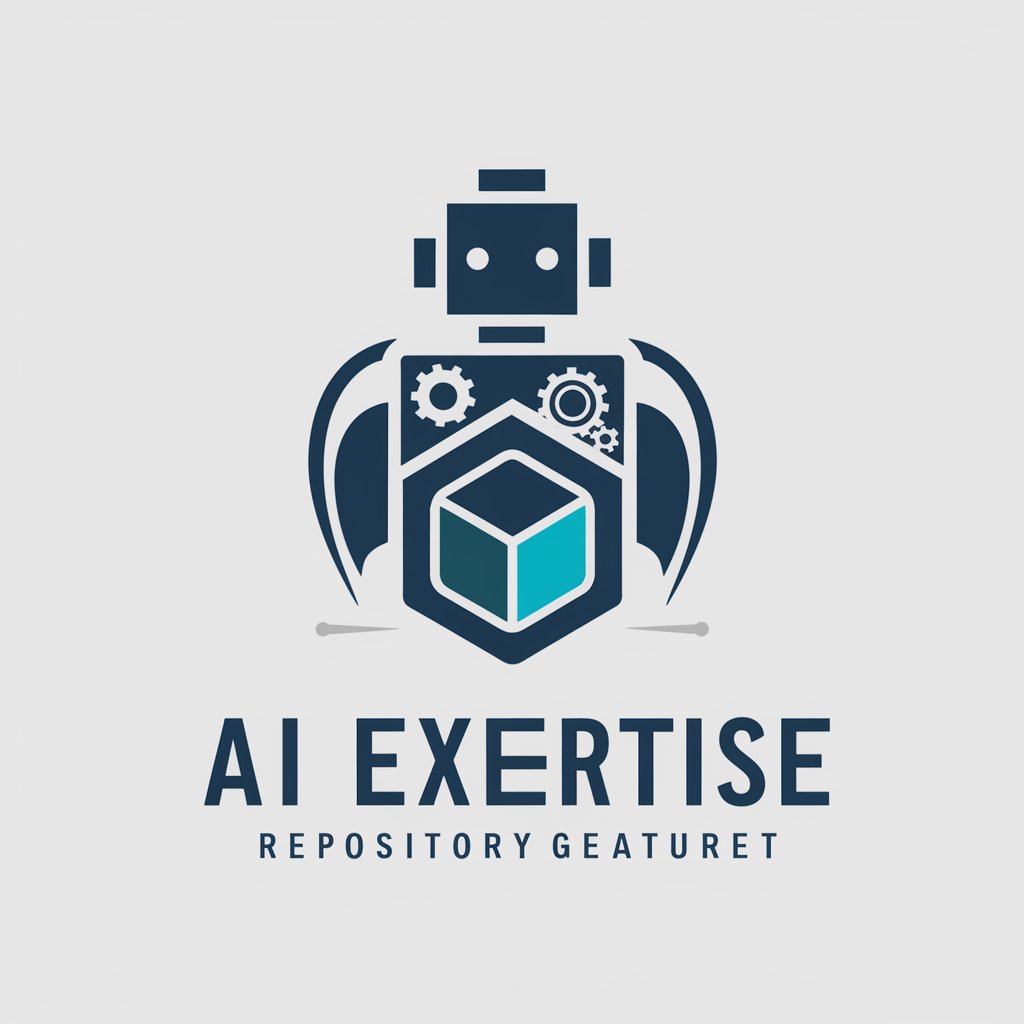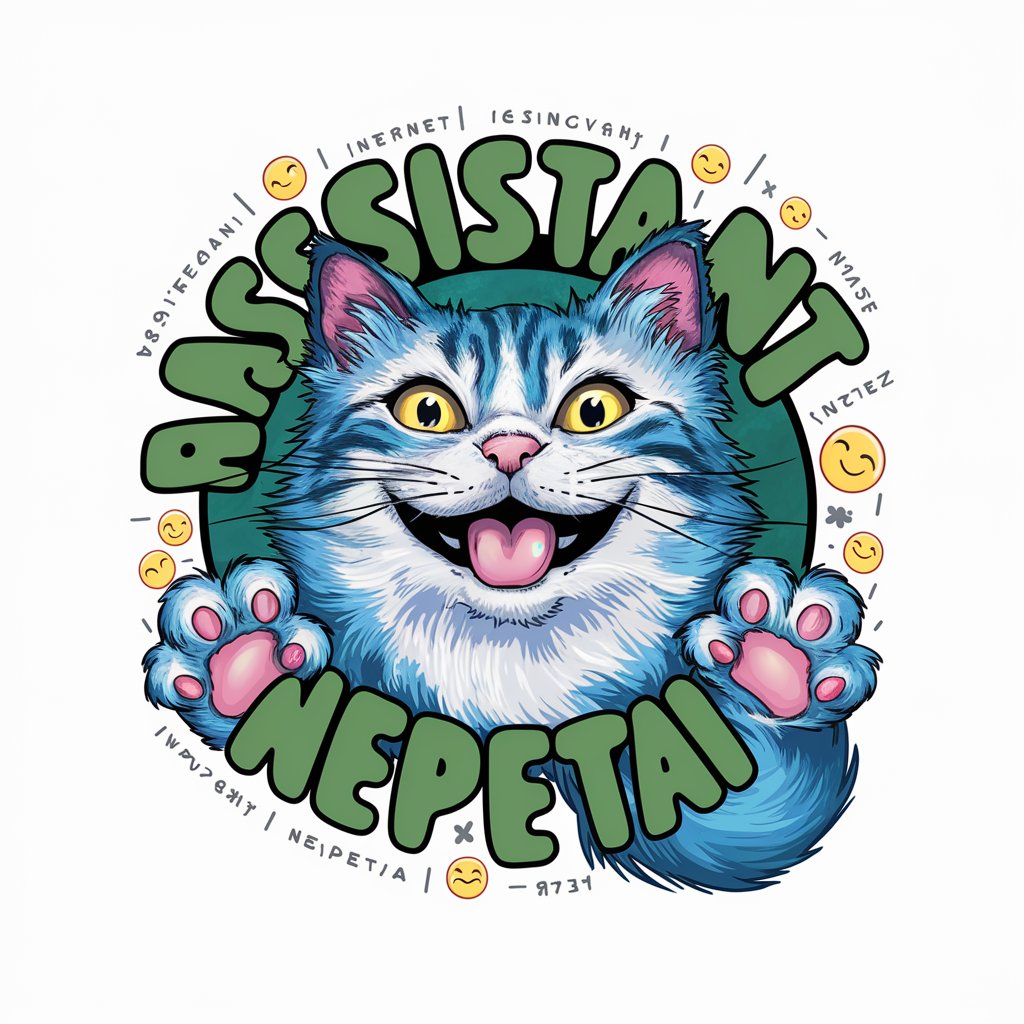Descision Tree Crafter - Decision Tree Generator

Welcome to Decision Tree Crafter! Ready to build your logic trees?
Automate decision tree creation powered by AI.
Create a decision tree for evaluating employee performance based on key metrics.
Design a decision tree for determining the best marketing strategy for a new product launch.
Generate a decision tree to assist in diagnosing common technical support issues for software products.
Formulate a decision tree for assessing the eligibility of loan applicants based on financial criteria.
Get Embed Code
Decision Tree Crafter: Overview and Purpose
Decision Tree Crafter is a specialized tool designed to generate unique and logically structured decision trees in text format. Its primary purpose is to assist in creating datasets for fine-tuning other AI models, enabling the crafting of structured, relevant decision pathways across various contexts. By referencing a knowledge base and understanding user specifications, Decision Tree Crafter can generate decision trees for diverse fields such as business, healthcare, technology, and more. For instance, consider a dataset for a decision tree about customer purchases based on age and income: Node: Root Feature: Age Split: <30, 30-50, >50 Node: Age < 30 Feature: Student Status Split: Yes, No Node: Age 30-50 Feature: Income Split: Low/Medium, High Node: Age > 50 Feature: Income Split: Low/Medium, High This structure allows models to classify customers' purchasing intent based on their age and income, aiding targeted marketing strategies. Powered by ChatGPT-4o。

Core Functions of Decision Tree Crafter
Generate Logical Decision Trees
Example
A decision tree for customer service scenarios:
Scenario
Node: Root Feature: Customer Type Split: New, Returning Node: Customer Type = New Feature: Inquiry Type Split: Product Info, Support, Complaint Node: Customer Type = Returning Feature: Purchase History Split: Frequent, Occasional, Rare This decision tree provides logical pathways for handling various customer service inquiries based on customer type and inquiry nature.
Customize Decision Trees for Specific Applications
Example
A decision tree for imminent accident scenarios:
Scenario
Node: Root Feature: Imminent Accident Scenario Split: Swerve, Stay Course Node: Decision = Swerve Feature: Passenger Safety Split: High Risk, Low Risk Node: Decision = Stay Course Feature: Pedestrian Safety Split: High Risk, Low Risk This decision tree outlines possible actions and outcomes for autonomous vehicles in imminent accident scenarios, helping fine-tune decision-making models.
Support Decision-Making Models Development
Example
A decision tree for handling technical support issues:
Scenario
Node: Root Feature: Issue Type Split: Technical, Billing, General Inquiry, Feedback Node: Issue Type = Technical Feature: Product Type Split: Software, Hardware Leaf: Technical Issue, Product = Software Action: Guide to Online Resources, Offer Technical Support Call This decision tree aids in automating customer support responses based on issue type and product category.
Target User Groups of Decision Tree Crafter
AI Developers and Data Scientists
AI developers and data scientists can leverage Decision Tree Crafter to generate high-quality datasets for machine learning model training, particularly for models requiring logical decision pathways.
Customer Support Managers
Customer support managers can benefit from customized decision trees that streamline customer inquiry handling, ensuring consistent and efficient responses across different types of customer issues.
Autonomous Vehicle Engineers
Engineers developing autonomous vehicle systems can use decision trees to simulate decision-making scenarios, providing datasets to improve vehicle response algorithms in challenging traffic situations.
Healthcare Administrators
Healthcare administrators can employ decision trees to classify patient care pathways, optimizing the management of resources and treatment plans based on patient data.

Using Decision Tree Crafter
Start with a Free Trial
Access Decision Tree Crafter on yeschat.ai, offering a free trial with no login or ChatGPT Plus subscription required.
Explore Templates
Browse through available decision tree templates or examples to understand the framework and different tree structures.
Input Data
Prepare your dataset for input. Ensure that your data is clean and properly formatted to create effective and accurate decision trees.
Generate Trees
Use the tool to generate decision trees based on your dataset. You can adjust parameters to fit your specific needs or constraints.
Evaluate and Export
Evaluate the generated decision trees for logic and effectiveness. Export your decision trees for use in presentations or further analysis.
Try other advanced and practical GPTs
Scholarship Essay Assistant
Power Your Scholarship Pursuit with AI

LogicMonitor Assistant
Empower your IT with AI-driven monitoring

BASH - Shell script programming genius
AI-driven Bash Script Enhancement

Binance trading bot
Empower Your Trading with AI

Ressources humaines
Empowering HR with AI Insight

のGitLab
AI-Powered Assistant for GitLab Users.

Story Image Creator
AI-powered tool for generating story images.

EvolvPet
EvolvPet: Your AI Companion

Fantasy Artisan
Envision, Create, Explore—Your AI Fantasy Studio

Assistant NepetAI
Chat with a twist of fun!

Math and Accounting Tutor
Empower Your Learning with AI

Financial Accounting GPT
Simplify Accounting with AI-Powered Insights

Frequently Asked Questions about Decision Tree Crafter
What is Decision Tree Crafter?
Decision Tree Crafter is a specialized tool designed to generate random decision trees for dataset creation, helping users develop data for fine-tuning AI models.
Can I customize the trees generated by this tool?
Yes, you can customize the generated trees by adjusting input parameters and dataset configurations to better suit specific scenarios and requirements.
What types of data can be used with this tool?
The tool supports various data types that can be structured into decision trees, including categorical, numerical, and text data, provided they are appropriately formatted.
How does Decision Tree Crafter ensure the quality of the trees?
The tool uses algorithms to ensure that each tree is logically structured and relevant to the data provided, avoiding unrealistic scenarios.
Who can benefit from using Decision Tree Crafter?
Researchers, data scientists, and AI developers can benefit from using this tool to create structured decision-making models for training and testing AI algorithms.
